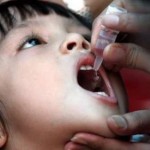What are Child Vaccinations and How do They Work ?
 Everyone knows that when a child is born he is regularly vaccinated to protect him from deadly diseases. Following are the facts which are always questioned by parents:
Everyone knows that when a child is born he is regularly vaccinated to protect him from deadly diseases. Following are the facts which are always questioned by parents:
What is the Vaccination ?
To understand this, we must understand our body’s defense system or immunity. Viral diseases occur only once in one’s life. After that attack the individual develops a powerful immunity that save him from further attacks. But this one attack can be dangerous enough to kill or maim a person.
Vaccination aims to prevent that from happening. Vaccinations offer protection from Viral ( Polio, Measles, Mumps, Rubella ) and Bacterial (TB, Diphtheria, Tetanus and Whooping Cough) diseases.
How Do Vaccine Work?
Each time the immune system is exposed to a foreign substance it produces certain molecules to fight it. The first time the strength to fight a foreign substance is not much but the next time the body is exposed to the same foreign substance, it is well prepared to fight.
The capacity to fight and destroy that foreign substance increases with repeated exposure.
A Vaccine is Based on this Fact
A vaccine is basically a diseases producing organism but devoid of its diseases producing ability. Thus it is a foreign substance that has been chemically rendered safe. In other words, it can attack a person without really causing the diseases. By exposure to the vaccine an individual is exposed to the foreign substance but not the disease.
With booster doses the body is exposed to the foreign substance enough times to build up the body’s immune system. With such artificial stimulation of the immune system, the body is well prepared to face the challenge of the natural diseases producing substance.
Each vaccine is however disease specific. Thus BCG vaccine acts to build up the body’s resistance against TB. Oral Polio Vaccine acts only against the Polio Virus. Drugs are given simultaneously for sake of convenience. Otherwise, the parents would have to repeatedly come to the clinic with the child and no child likes that.
Fever After Vaccination
As foreign substances are introduced into the body system, they are bound to produce some reactions like a scar in case of BCG and mild fever after Triple-Polio vaccine. But these aren’t dangerous. The disease producing part of the organism is destroyed when the vaccine is made. However sometimes a child is so weak and its immune system is so frail that even a ‘safe’ vaccine can turn lethal. But these are extremely rare cases.
Frequently asked questions about child vaccinations:
Can several vaccines be administered simultaneously ?
The simultaneous administration of the ‘triple’ Measles-Mumps-Rubella (MMR) vaccine and of Oral Poliomyelitis vaccine produces results similar to those observed when the vaccines are administered separately. Immune responses were satisfactory and there were no major post-vaccinal reactions.
Can a child suffering from malnutrition be vaccinated ?
The WHO does not consider malnutrition to be a contraindication for the administration of BCG, measles vaccine or oral polio vaccines to children. The immunity at all.
What is the reason for vaccinating both boys and girls with combined measles-mumps-rubella vaccine (MMR) at 12 months ?
 Children are at risk from Measles, Mumps and Rubella only after completing the vaccination is done between 12 and 18 months. Getting a Rubella infection during pregnancy is disastrous to the unborn baby. Naturally all women must be immunized against this deadly virus as early as possible.
Children are at risk from Measles, Mumps and Rubella only after completing the vaccination is done between 12 and 18 months. Getting a Rubella infection during pregnancy is disastrous to the unborn baby. Naturally all women must be immunized against this deadly virus as early as possible.
The reason even boys are given Rubella vaccine along with Measles and Mumps vaccine is to reduce the rate of these disease and their complications as well as to eliminate their endemic and epidemic nature totally.
Decreased circulation of the wild virus by immunizing both boys and girls against it provides indirect protection to susceptible pregnant women.
How should rest of the immunization schedule be handled when a complication occurs after administration of a vaccine ?
If the complication is only a low grade fever or a local reaction is serious (high fever, fits, collapse) after administering Triple-Polio Vaccine, then the pertussis vaccination isn’t recommended. Instead of DPT, it is better use DT vaccine for the booster doses.
Pertusis vaccination should be given separately as it is the most probable cause of the serious reaction and it must be given in gradually increasing doses.
When a child is vaccinated against rubella, can he/she contaminate his/her pregnant mother? Is the vaccine contagious ?
No, there is absolutely no danger. The virus used for vaccination has been totally deprived of its ability to spread and cause the disease.
Can a child with diarrhea be vaccinated ?
There is no reason for stopping any injections like DPT or MMR or BCG. However if Oral polio vaccine is given during diarrhea, it is likely to be thrown out without immunizing the child. So after the bout of diarrhea has been treated, a repeat dose is advised.
Is there any objection to vaccinating a child who already had measles, mumps or rubella or who already been vaccinated against them ?
Vaccination in such cases will be useless as the child has already been immunized.
If there is a case of measles, mumps or rubella in a family or an institution, can the other receptive children be successfully vaccinated ?
Children in such cases must be vaccinated within 2 or 3 days. Beyond that period the children may have already contracted the diseases and the vaccine may fail, hence it is better to administer Gamma-Globulin to protect the children.
Can immunization be performed during an epidemic ?
Yes, it can. Epidemics which justify mass immunization are of: polio, influenza, meningitis, measles and cholera.
If a child has received only two injections of a quadruple DPT Polio vaccine during the first year of life, must the entire immunization be done over again ?
No. if there is some delay in implementing the immunization schedule, vaccination need not be started over again, but should be taken up where it was left off, and with the proper number of injections for the child’s age.